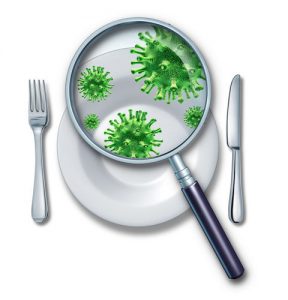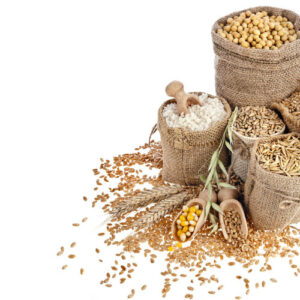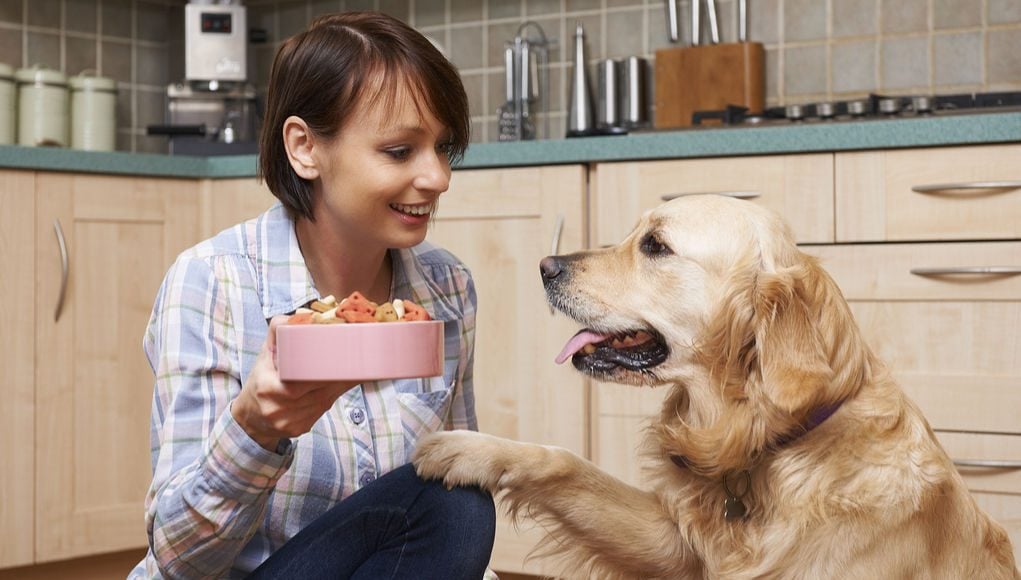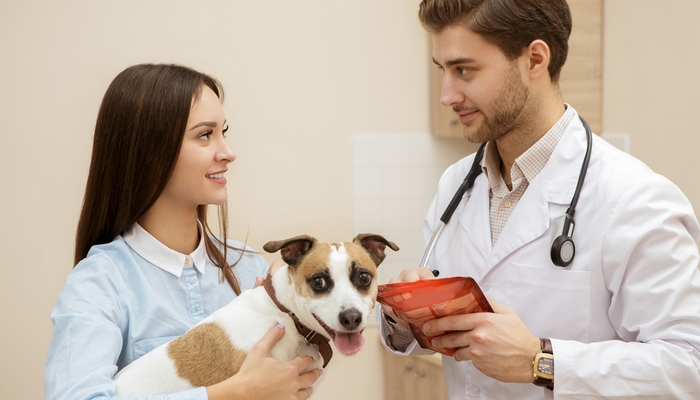Veterinarians and owners often look at a dog’s nutritional needs in relation to a specific medical concern, but it goes without saying that it’s better to be proactive and think about your dog's diet before he gets sick. There’s definitely a lot of dog foods to choose from out there, but it can be confusing to know which one will be the best choice for your dog specifically.
Your veterinarian is the best resources to start with, but there are also other ways to evaluate dog food brand's quality and whether it's appropriate for your dog. We'll discuss some of those tips in this article, but remember that finding the right dog food isn't a one-time thing. It's something you'll do many times over the course of your pup's life.
 Puppies, senior dogs, overweight dogs, pregnant dogs and dogs with special health concerns have unique nutritional needs. There are other variables that come into play in determining the type of food you should feed your pet. Finally, as your dog grows and develops, his nutritional requirements and food picks will need to change too.
Puppies, senior dogs, overweight dogs, pregnant dogs and dogs with special health concerns have unique nutritional needs. There are other variables that come into play in determining the type of food you should feed your pet. Finally, as your dog grows and develops, his nutritional requirements and food picks will need to change too.
Not all dog foods have the same quality and even the best dog food brands might not actually be what your dog needs because of health concerns, or differences in age, size and activity. All dog food companies will do their best to make their products sound good, so as consumers, we need to educate ourselves and understand dog food labels.
We also need to regularly measure our dog’s weight, how much he eats, and how much activity he gets. By doing this we can share accurate data with our veterinarian to help you make healthy, dietary decisions for your dog.
RELATED: What Are My Dog’s Nutritional Needs?
17 Tips on How to Choose the Best Dog Food for Your Dog
1. Talk to your veterinarian about a nutritional assessment
In 2013, the Global Nutrition Committee of the World Small Animal Veterinary Association came together to produce global nutrition guidelines for small animals like cats and dogs.
From that point forward, nutritional assessment was marked as a vital sign vets should use when doing a physical examination, along with temperature, pulse, respiration and pain to determine a dog’s health.
2. Have your dog’s body fat checked
There are different systems that vets can use, but they all score a dog’s proportions, specifically the waist behind the ribs. Dogs should have palpable ribs, which means that they’re noticeable and easy to touch with only a slight fat covering.
Also, the abdomen shouldn't bulge out from the dog’s sides. There's a great resource on checking your dog's body fat levels, and it's called Body Condition Score Chart.
3. Measure your dog’s food
You need to know how many calories your dog regularly eats in a day. You can’t do that if his food isn’t measured with something like a measuring cup, so make sure to use that.
After that, you can figure out how many calories there are by looking at the dog food label, but remember to include any dog treats you give in your dog's daily calories too.
4. Consider physical activity and age
The type of activity and how much your dog does is a major factor that you and your vet need to consider when figuring his calorie requirements, as well as how much time he spends outside.
Accurate information is needed about these kinds of things, so you and your vet can use the data to set healthy meal portions. Active dogs need more fat and protein, while older dogs need leaner meat.
RECOMMENDED: How To Make Homemade Dog Food (Instructional Video)
5. Regularly track your dog’s weight
It isn’t always immediately obvious if our pet has gained weight. Get your dog to stand on the scale or weigh yourself and then hold your dog, subtracting your weight to get his.
Make this a regular habit, and you’ll have the added bonus of watching your own health.
6. Breed-specific dog foods are just a marketing trick
Your dog’s size will help set how many calories he needs, but his breed doesn't have a whole lot to do with it. Big breeds obviously need more than smaller ones, but science hasn’t examined specific types of diet and compared them to select dog genes.
That doesn’t mean breed specific foods are automatically a bad choice though, it’s just that there is only so much you can expect from that kind of labeling.
7. Raw dog food often carries bacterial risks for humans
 According to the FDA, owners who feed their dogs raw food are at a higher risk of getting sick from Salmonella and other food borne bacteria like Listeria Monocytogenes. The stomach acid of a dog’s digestive system is much better than humans at dealing with bacteria, so your dog might not show any symptoms for a while.
According to the FDA, owners who feed their dogs raw food are at a higher risk of getting sick from Salmonella and other food borne bacteria like Listeria Monocytogenes. The stomach acid of a dog’s digestive system is much better than humans at dealing with bacteria, so your dog might not show any symptoms for a while.
Dogs can still be carriers and spread the dangerous bacteria to their families, even if they show no signs of the disease.
Bacteria is also sometimes found in commercially produced kibble because of contamination after it's made. Always be careful how you handle dog feces, and don’t leave it lying around. How you handle dog food is important too, as well as washing your hands thoroughly before and after feeding your dog.
8. Protein needs to be the first ingredient in your dog’s food
Meat should always be named as coming from a specific animal, like chicken, lamb or beef. If the label just lists random organs like liver, heart or tripe, without saying what animal, or if it just uses a generic term like poultry that’s probably a good indication of poor ingredients.
READ MORE: How To Slim Down An Overweight Dog + 30 Day Diet Plan
9. Steer clear of by-products
Meat, grain and vegetable by-products are all common in dog food and shouldn't be a main ingredient. Avoid modified protein sources, too.
10. Vegetables aren’t always a bad thing
Dogs might not need vegetables, specifically, but they do need a balanced diet with the right vitamins and minerals. Including vegetables is often perfectly healthy, especially if they aren’t just added starch.
Even high protein dog foods might not be balanced or provide a complete diet, because certain vitamins, minerals, enzymes and trace elements can be missing that will impact your dog’s health. This is why you should always discuss your dog's nutritional needs with your veterinarian or a canine nutritionist.
RELATED: Can Dogs Go Vegan? Ins and Outs of Vegetarian Diet for Dogs
11. Look for complex, whole grains
 Brown rice and wild rice are better than white rice. Wheat gluten and corn starch should be avoided.
Brown rice and wild rice are better than white rice. Wheat gluten and corn starch should be avoided.
Include whole grains in your pet's diet will always turn into a much healthier meal for your dog, just as this rule applies to a human diet.
12. Avoid added sugar, artificial sweeteners, artificial color and preservatives
Needless to say, low quality dog foods add sweeteners just to make their dog food taste more appetizing. These sweeteners are just empty calories. Look for molasses instead, and never buy dog food with added corn syrup.
13. Look for the AAFCO label
The Association of American Feed Control Officials (AAFCO) is a name you can trust, but it doesn’t actually test or regulate pet food. It does, however, create regulations for states and feed control officials.
Dog foods can say they meet AAFCO rules if they pass a feeding trial, meet their Nutrient Profiles or if they resemble a product that has passed a feeding trial.
READ MORE: Dog Food Ratings and What You Need to Know About Reviews
14. Variety is a good thing
You can provide a more balanced diet and make sure your dog gets all the nutrients he needs by adding some variety to his diet. Using both kibble and canned food is a great way to change up the menu.
RELATED: 5 Best Organic Dog Food Brands
15. Urinary tract infections often call for a special diet
If urinary tract infections have been a problem for your dog in the past, he'll need a dog food that’s less acidic, which has a lower pH. Sometimes, choosing to go the homemade dog food way may be a better option when your dog requires specific diet.
16. Diabetic dogs need special dietary care
 Both high carbohydrate and high protein diets have been recommended for diabetic dogs, so there are two opposing views on the subject. Either one, though, needs to work with insulin to control your dog’s blood sugar. Using added fiber to reduce calorie intake and to improve glycemic control has also been studied with some positive results.
Both high carbohydrate and high protein diets have been recommended for diabetic dogs, so there are two opposing views on the subject. Either one, though, needs to work with insulin to control your dog’s blood sugar. Using added fiber to reduce calorie intake and to improve glycemic control has also been studied with some positive results.
The most important factor seems to be digestibility. Complex carbohydrates slow digestion and absorb glucose, which keep the blood sugar constant. Remember, if your dog has been diagnosed with diabetes it is crucial that you work with your veterinary team before changing his diet.
17. Your veterinarian may carry healthy pet food
You can often buy nutritious pet food right from vet’s office, as well as treats and supplements. Some products are for therapeutic use and others are for overall health. Discuss any diet changes with your veterinarian. They'll be able to explain all your options and will possibly recommend a food that they carry.
READ NEXT: 9 Best Dog Food Blogs

















